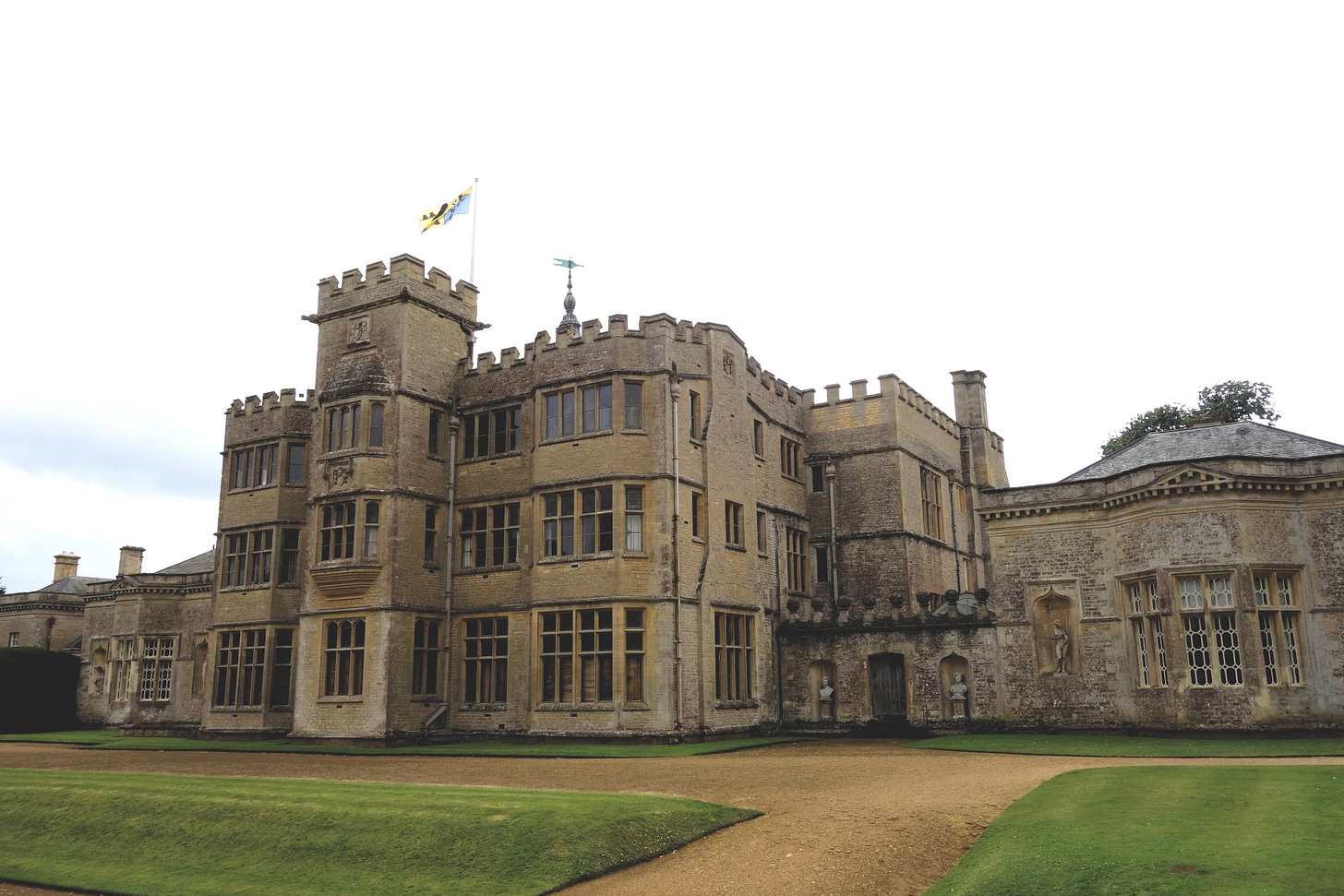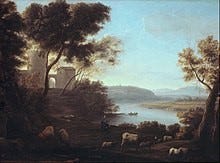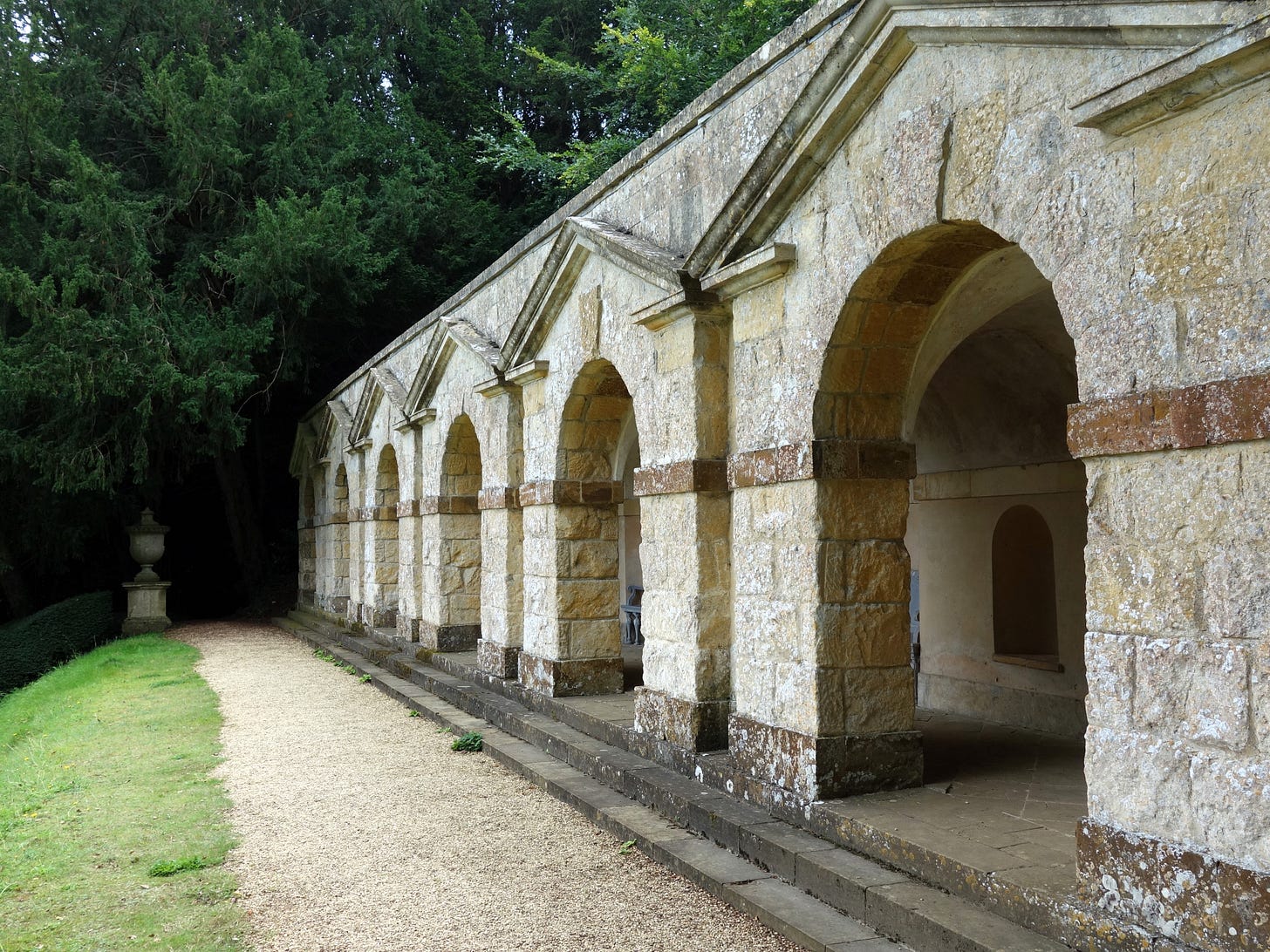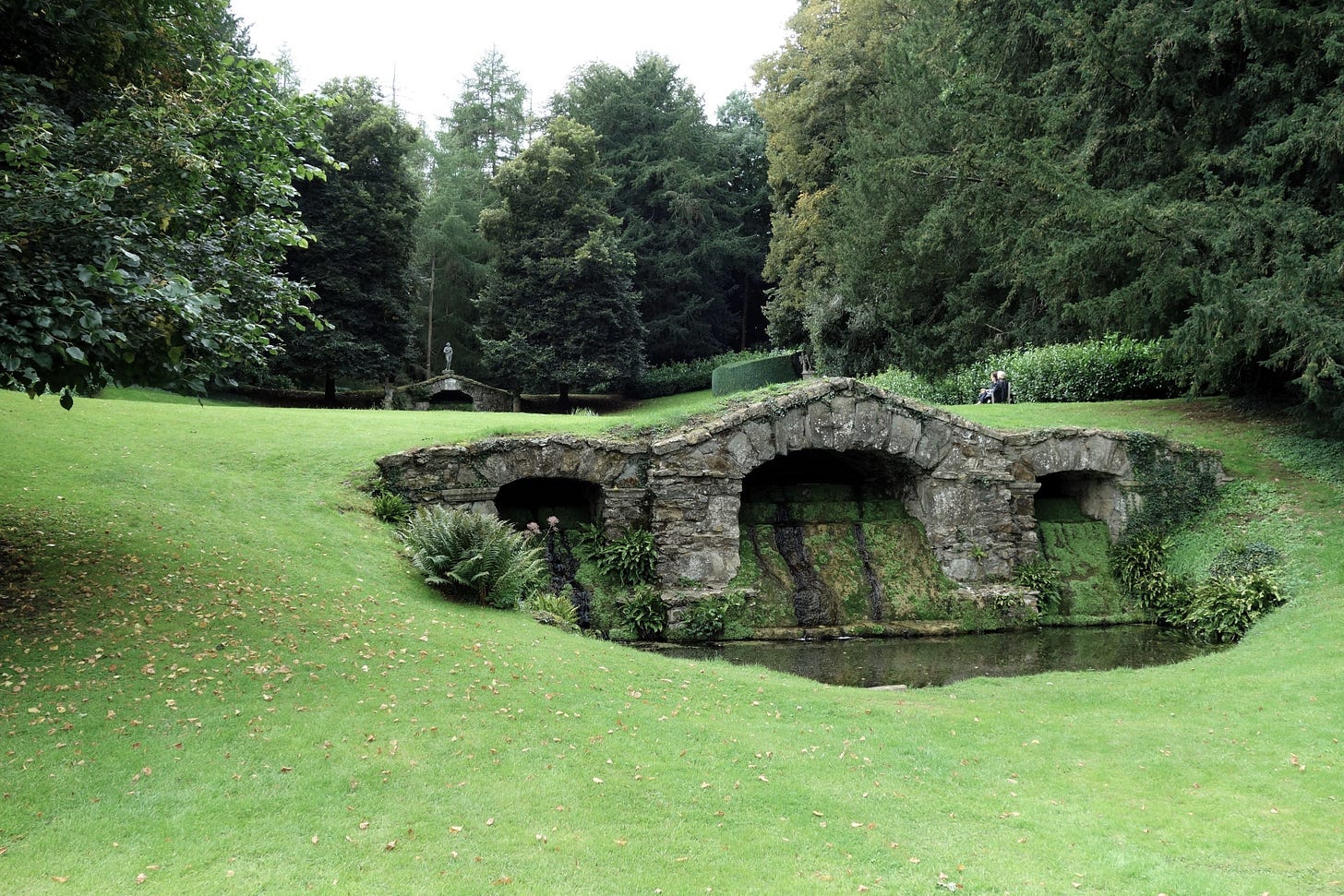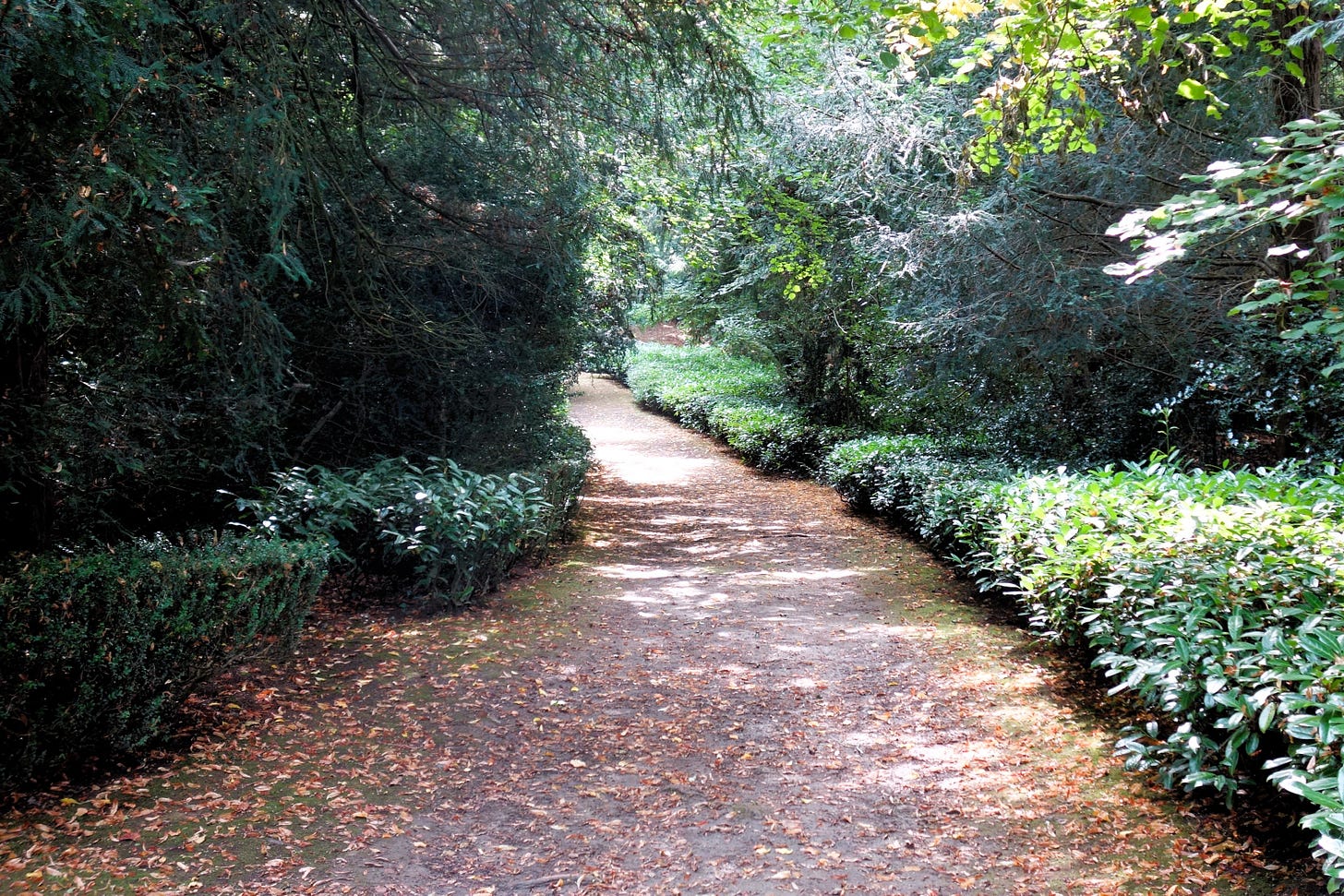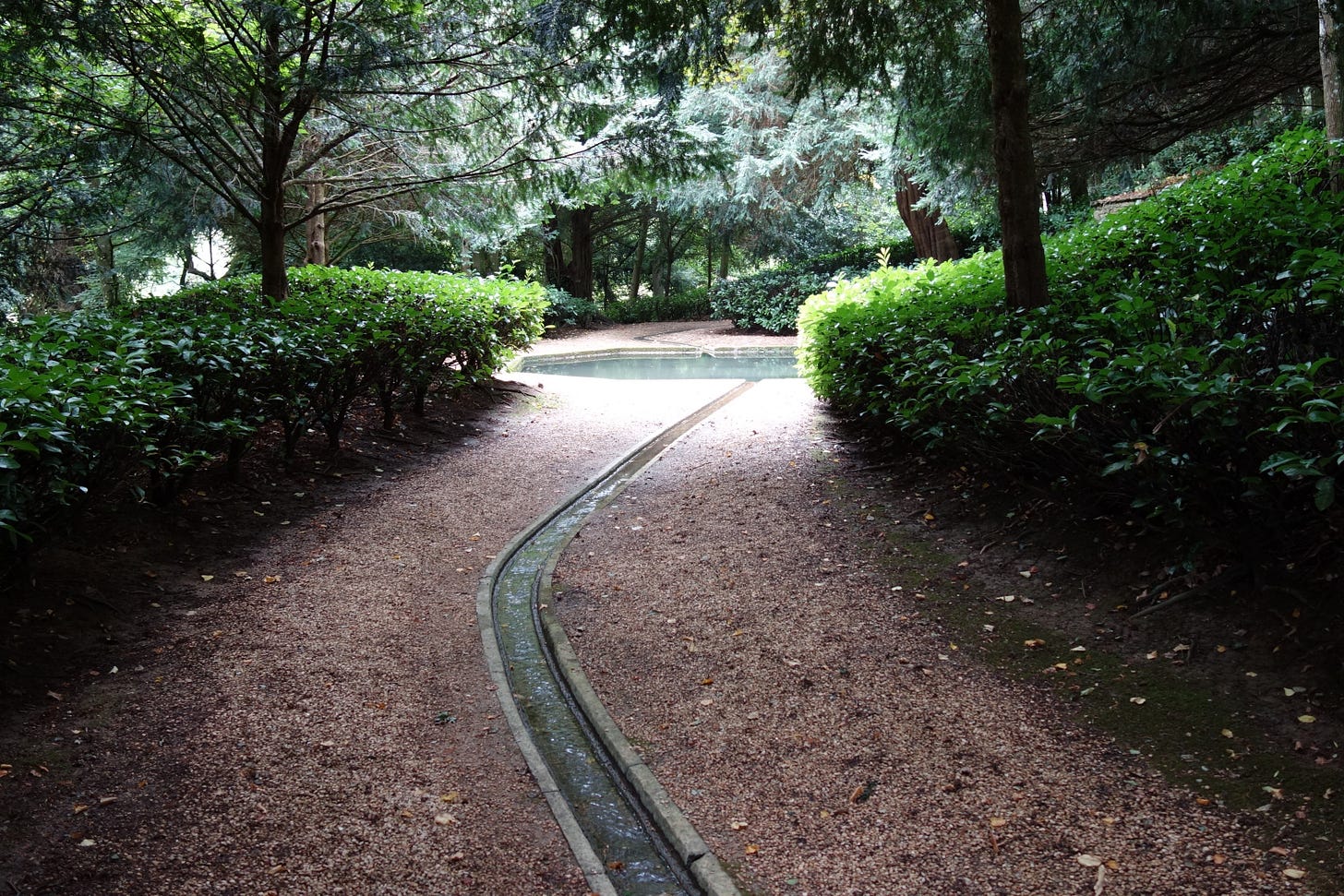So, you may be wondering why I’m writing about Rousham Gardens, an historic garden, in a publication about modern gardening. I firmly believe that, in the design world, what went before often informs the new and the modern. This is very true in gardening and in garden design generally; the design styles of formality and naturalism alternate through history.
We are currently at a point in garden design where naturalism is at the fore and rewilding is the trend everyone is getting on board with. So, what better way of looking forward and learn than to look back at a brilliant example of a wild and romantic garden, which on the surface looks very natural. But is it natural or is it engineered? Let’s explore.
An introduction to Rousham Gardens
Rousham House
Rousham House was built in 1635 by Sir Robert Dormer and is still in the ownership of the same family. The garden was started by Charles Bridgemen in the early 18th century in the picturesque style which was becoming popular at the time. William Kent was then employed to enlarge the house and further develop Bridgeman’s plan, completing the garden. It remains much as it was, unaltered since completion. In many ways it is literally a step back in time and demonstrates the first phase of the English Landscape Movement.
What is the English Landscape Movement?
Though often considered to be the quintessential English landscape style, the influences and origins of this movement are actually far more European and historic. Bridgeman and Kent were inspired by 17th century painters, Poussin and Lorrain, who created romantic and picturesque images based on the ancient idyll of Arcadia. These romantic landscape paintings featured rolling hills, lakes or rivers, temples, castles, roaming livestock and of course the odd god or nymphs. The aim was to recreate the vistas that the classical gods once gazed upon.
The Roman Campagna (1639) Claude Lorrain, Metropolitan Museum of Art
These painting became the inspiration for the landscape designers wanting to rebel against the more formal French style which prevailed at the time. What Bridgeman, Kent and Capability Brown did at the time was no less innovative than Chanel’s little black dress or Damien Hurst’s Shark. Parterres and formal planting were swept away and replaced with a classical landscape of rolling fields, trees, grand water features and follies in the form of temples, ruined castles or mock classical buildings.
Start of the garden tour at Rousham
The Bowling Green
So, let’s start to explore Rousham Gardens. Once you’ve parked up and purchased your ticket, there’s no need to book in advance for the garden, you simply follow the signs towards the garden which leads you past the house to the Bowling Green. This is a vast level green expanse; perfect for lazy weekends hosting friends and playing croquet with a summer cocktail in hand.
Clever design is at play here, the trees and shrubbery either side of the bowling green channel the eye towards the distant landscape giving the impression that the garden stretches out into the far distance. Only when you reach end of the green and stand by ‘Lion and Horse’ statue by P. Scheemaker (1740) do you realise that the garden terminates much closer. This is because a steep slope has been carved into the land, creating an illusion, similar to a Ha Ha, of endless landscape.
Praeneste Arcade
From the Bowling Green we turned left and followed the lower path through the dense woodland emerging at the next set piece, the Praeneste Arcade, which features a Terrance above with a statue of the ‘Dying Gladiator’.
The Arcade provides the perfect location to observe the full Arcadian landscape, with a statue of Apollo visible at the end of an axial Long Walk through further dense trees and shrubs. Below is the River Cherwell sweeping through the landscape and retaining the cattle on the field opposite. A key element of the landscape movement was to enable livestock to be visible and admired but quite separate from people.
We moved on to along another pathway to the sequence of water cascades and pools.
Lower Cascade with Upper Cascade beyond
The Lower Cascade is part of a space set out to replicate a landscape perhaps somewhere in ancient Greece, perhaps on a hillside populated by gods and nymphs cavorting in gay abandon. I think to think of this as the Vale of Nymphs. At the very top there were once a series of ponds which fed the Upper Cascade, which in turn fed the Octagon Pond and which feeds the Lower Cascade.
The overall effect is very natural, creating a calm and tranquil space where one can relax with a picnic and admire the views in and out of the garden. Naturalistic and romantic in look and style, though heavily designed and engineered, this is man conquering nature.
The Gothic Seat
From the cascades and ponds, we ventured up to the hill to the Gothic Seat and Palladian doorway by Kent. This is a small grouping of a folly, urns and large stone doorway. I have to say the purpose of this part of the garden is unclear, other than it provides a view back the house across a meadow and further extends the notion of a journey around a pleasure garden.
However, it does provide an opportunity to regard Kent’s handy work in more detail. The Gothic seat is a handsome stone building very much in a castellated style and features a seat covered by an archway, to provide protection from the elements. Adjacent is the Palladian Doorway which provides quite majestic access to the garden from the nearby lane.
In front of the two urns is a Ha Ha, which provides safe separation from any livestock that may be inhabiting the meadow.
The Woodland Walk
From the Gothic Seat we headed downhill though the Woodland Walk, flanked on both sides by laurel hedges and mixed trees including yew and beech. As the path winds its way along, you feel transported back to a much older time half expecting of a glimpse of Pan playing his pipes as he trots along the path in the distance.
Temple of Echo by Kent and Townsend
At the end of the Woodland Walk we arrived at the Temple of Echo, designed by William Kent and William Townsend, strategically position to provide views out to the wider landscape whilst also providing protection from the weather. Echo was a mountain nymph, and this raised location surrounded by woodland seems to be very intentional, replicating the ancient mountains of Greece. Whilst the garden seems so natural, you never really lose sight that it was human intervention that created this landscape.
Watery Walk with Rill and Cold Bath
Our exploration of the garden continued, from the Temple of Echo, past the Statue of Apollo and the start of the Long Walk back up the Woodland Walk slightly to the start of the Watery Walk. Through the middle of the Watery Walk path runs a rill, shallow and stone lined, it sits very cleanly with gravel ether side leading to an octagonal Cold Bath. The overall effect is quite contemporary, perhaps being mid-20th century or early 21st century in execution. No doubt many landscape and garden design students have been inspired by this particular landscape feature.
The rill and Watery Walk continue past the Cold Bath to the Octagon Pond and to what I like to think of as the Vale of Nymphs. We head off back down the slope past the Lower Cascade towards the River Cherwell. We continue alongside the river with the slope up to the Bowling Green on our right through to another open space.
Set back here, just within the fringe of the trees, sits the Pyramid by Kent, yet another place to sit and watch the River Cherwell flow gently by. I couldn’t help but wonder what fabulous parties there had been the past and what secret assignations took place in the secluded follies dotted throughout the garden.
Finally, we chanced upon the Classic Seat, which takes the form of an old ruin, and marks the point where the garden ends and the landscape continues on. From here we followed a pathway up to a gate in a wall. What lay beyond we wondered?
The Walled Gardens
The change in style is obvious as you slip through the gate from an 18th-century romantic recreation of Arcadia to something all together more like a traditional walled garden.
The Cutting Garden
Great rows of blooming Dahlias and Cosmos march across the Cutting Garden with the church standing beyond, watching like a great sentry. There is something very old English about a walled garden and even more so when it’s given over to cut flowers. It’s a place I could easily inhabit were it not for the fact I have do a home to go back to. There’s plenty to see here, and at the end of the path is a choice, to wander round the church, take a look at the Pigeon House or investigate the Long Border, which is what we did.
The Long Border
The Long Border runs back towards the house with deep borders either side of the path, planted up with a mix of perennials and shrubs. Right now, in early September there is still plenty of colour and interest. Huge drifts Japanese Anemone, Goldenrod (solidago) and Helenium line the route. About halfway up is an opening on the left which provides access to the Pigeon House Garden.
The Pigeon House and Rose Parterre
The Pigeon House Garden and Rose Parterre have a decidedly French feel, almost as if one had slipped over the Channel. Whilst the roses were past their best this was most definitely a place to relax, have a picnic and enjoy a glass of wine in the sunshine. Just past the Pigeon House are even more Dahlia ready for cutting.
And so, our trip comes to end, I’ve realised that this must be one of my favourite gardens. I do love the English Landscape Movement gardens and parklands, though this garden seems to be on a very human scale with follies and vantage points to visit. You never take the same route twice, even if you think you have.
Reflections on Rousham
So, what can we learn from Rousham? For me there are a number of key take aways which can be applied to even the smallest urban garden.
Firstly, a natural and romantic looking garden takes careful planning and design. Natural just doesn’t happen on its own. Rousham was meticulously devised to create an Arcadian idyll, from the design, the location of the follies, the water features, sculpting the ground, the planting, through to the vistas and enclosed spaces.
Secondly, sightlines and axis need to be thought through from the start, the positioning of garden features, the views to and from the garden, planned before construction and planting can take place.
The third key take away is about bringing the outside landscape in. Here at Rousham, the designers captured a much wider landscape and incorporated it into the garden. At home even on a small scale, planting a smaller tree in front of a larger neighbouring tree can create the illusion of being part of a larger landscape.
Finally, it’s that old adage that less is more. The main garden is a stripped back minimalist masterpiece, sparse and with careful use of limited palette of materials, features and planting.
You can find out more about Rousham and how to get there on their website https://rousham.org/.




